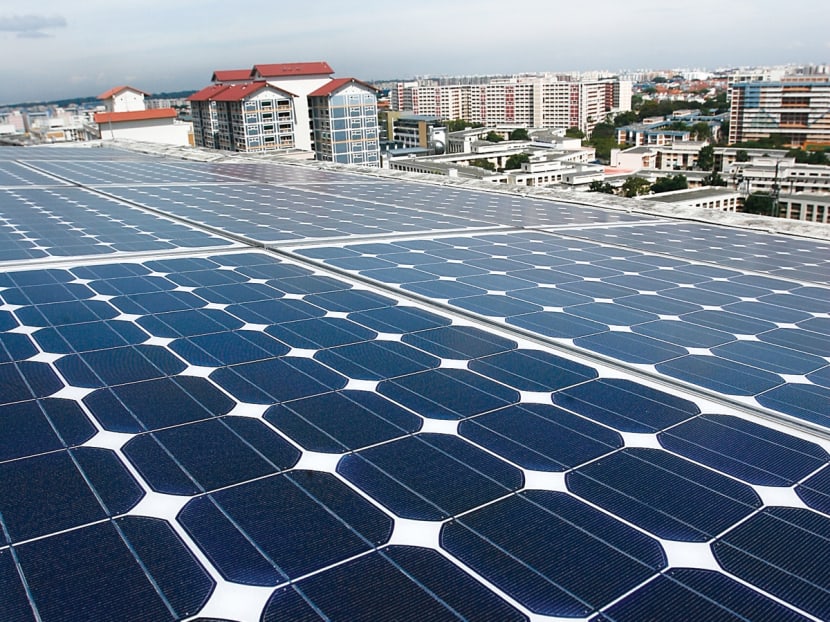Govt looking to take solar power to schools, camps
SINGAPORE — The Government is looking to expand the use of solar power on its properties beyond Housing and Development Board (HDB) flats, possibly to schools and military camps, for example.

Currently, 176 HDB blocks have solar panels and the number is set to grow to 300 blocks next year. Energy generated from these panels help power common services such as lifts and corridor lighting. TODAY File Photo
SINGAPORE — The Government is looking to expand the use of solar power on its properties beyond Housing and Development Board (HDB) flats, possibly to schools and military camps, for example.
Announcing this yesterday, National Development Minister Khaw Boon Wan said government organisations, which could include the Ministry of Defence (MINDEF) and the Ministry of Education (MOE), will ride on the HDB’s bulk tenders for solar panels to expand their use here.
Writing on his blog, Mr Khaw noted that the HDB has the most experience with solar panels and also the largest installation.
“(Having) the largest (number), the HDB is also taking on the role of helping other government (organisations) harness solar energy. This way, we help to expand the use of solar panels beyond HDB blocks,” he said. “MINDEF has expressed interest to install solar panels on the rooftops of their camps. The MOE is also looking into using them on the rooftops of schools.” Details of the two ministries’ plans were unavailable.
The first demand aggregation tender, which combines solar panel demands across the various government organisations, will be called next year, Mr Khaw said. Having the different government arms ride on the HDB’s bulk tenders would lead to lower costs due to economies of scale. This way, solar deployment here would also be accelerated, he added.
There are currently 176 HDB blocks with solar panels and the number is set to grow to 300 blocks next year. Energy generated from these panels helps power common services such as lifts and corridor lighting. The clean energy also helps town councils offset rising energy costs.
In May, the HDB called the largest solar leasing tender to date, for 20MWp of solar photovoltaic (PV) panels to be installed at 500 blocks of flats in Jurong, Sembawang, Marine Parade and Tampines.
Other government organisations that have tapped solar panels include national water agency PUB. It has two pilot projects — building rooftop solar panels at Choa Chu Kang Waterworks and installing floating solar systems on Tengeh Reservoir — that harness solar power.
Similarly, the “zero-energy” building, located within the Building and Construction Authority Academy, achieves energy self-sufficiency with the power generated from solar panels installed at multiple locations on the building.
Dr Thomas Reindl, deputy chief executive officer of the Solar Energy Research Institute of Singapore, said an aggregation tender could enjoy some benefits. He said: “There are two effects: Increasing productivity through more experience, more optimised workflows and continuous capacity utilisation; and secondly, the lower cost through volume discounts on the supply side.”
Mr Nilesh Jadhav, programme director at the Energy Research Institute at Nanyang Technological University, said more installers could also enter the market with more activity taking place on the solar energy front. But while aggregating demand across government organisations would help reduce equipment costs, he noted that there would be a limited impact on overall cost savings as installation costs would not change.
“This is due to (installation) happening at different sites,” said Mr Nilesh, all of which requires additional regulatory costs, permit costs, labour costs, costs of moving and installing the panels at different rooftops, for instance.
Under the SolarNova Programme, an initial target of 350MWp of solar energy by 2020 has been set for the public sector.
Of this, the HDB will contribute 220MWp from solar PV panels at about 5,500 HDB blocks — generating enough electricity to provide for common services and households in a town the size of Woodlands.






